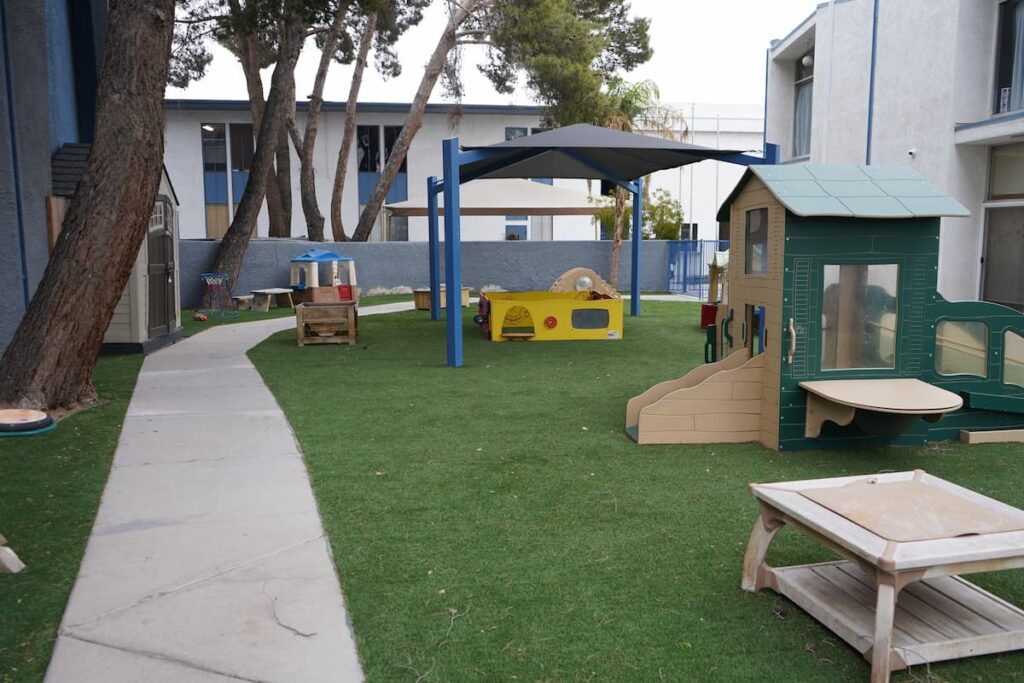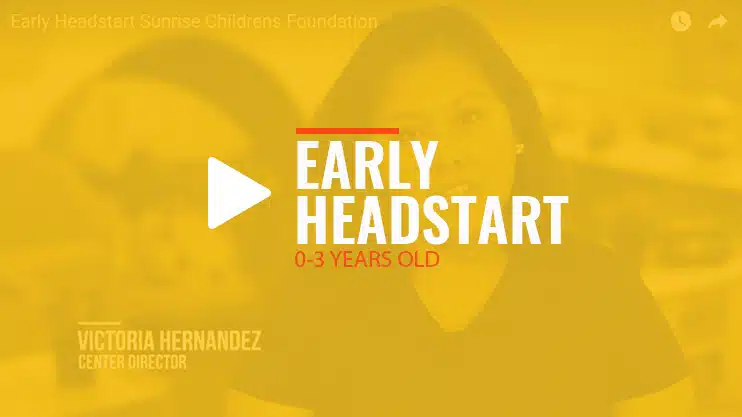Create a Strong Foundation for Your Child:
Enroll in an Early Head Start Program
Head Start 60th Birthday Celebration

Early Head Start Programs
An Early Head Start program — also known as an Early Childhood education program, and is sometimes referred to as preschool — is where families can support their children by providing them access to an educational curriculum that focuses on social, emotional, and developmental skills during these formative years of life.
If your child is aged from birth to 3 years old, an Early Head Start program can help lay a solid foundation, in which they’ll build critical school readiness skills that can transform the rest of their lives.
That’s no exaggeration, either. The research is clear. Children who are enrolled in an Early Childhood education program, like Head Start, go on to have improved school readiness, stronger academic achievement, and a greater chance at positive outcomes in their teen and adult years.
Additionally, children who have developmental disabilities, including cognitive impairments, like a learning disability, greatly benefit from an Early Head Start program because trained educators can help families identify developmental disabilities or delays early on, allowing children the ability to get the resources they need sooner.
Want to learn more? Give us a call at 702-631-7130, and discover the Early Childhood education program at Sunrise Children’s Foundation.
How To Enroll in an Early Head Start Program
Across the nation, the process of applying for an Early Head Start slot is relatively the same. You’ll first need to locate a Head Start program that you would like to enroll your child in. Next, you’ll want to learn about the different programs to see which is a good fit for your family. In Nevada, you can use the Nevada Head Start Directory where you’ll find a list of all the participating Head Start programs in your community.
Then comes the application process. You’ll need to have all your forms ready so you can complete and submit the Early Head Start program application. You’ll also be asked to come in for an interview either on the day you fill out the application, or once you turn it in. There’s a small waiting period that generally follows, and after a couple of weeks to even a couple of months, you’ll find out if your child has been accepted into the program, or has been waitlisted to find available programs.
As a federally funded program, priority for admissions is given to high-needs students. This includes children in foster care, children who have a disability, and those whose families are experiencing housing insecurity, food insecurity, and other adverse life experiences.
Start your child strong when you enroll them in a Head Start program at Sunrise Children’s Foundation. Give us a call at 702-631-7130 to learn more.
Sources:
Facts and Impacts. (2024).
Head Start Program. (2024).
NHSA. (2024).
Disclaimer: This website is supported by Grant Number 09CH-012358 from the Office of Head Start within the Administration for Children and Families, a division of the U.S. Department of Health and Human Services. Neither the Administration for Children and Families nor any of its components operate, control, are responsible for, or necessarily endorse this website (including, without limitation, its content, technical infrastructure, and policies, and any services or tools provided). The opinions, findings, conclusions, and recommendations expressed are those of Sunrise Children’s Foundation and do not necessarily reflect the views of the Administration for Children and Families and the Office of Head Start.
JOIN OUR COMMUNITY
Receive updates, news, and special announcements.
NOW ENROLLING!
OR CALL 702-631-7130


